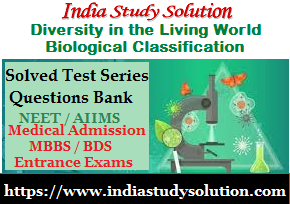Structure of Atoms | Atomic Structure
Solved MCQ Test Series for NTA-NEET, JEE Main & Advanced, IIT, AIIMS, JIPMER, WBJEE, BITSAT : Structure of Atoms (Atomic Structure)
Here you get carefully prepared another Set of 10 MCQ practice questions (Q.No.31 - 40) in our each Test Series with hints & solutions (given at the end) from the Chemistry chapter - Structure of Atoms.
Go to previous Test Series:
Practising with our test series questions will certainly enhance your level of confidence for NEET-UG, JEE Main & Advanced (IIT) AIIMS, JIPMER, COMEDK, WBJEE, MBBS Admission Tests, Engineering Entrance Exams, NEST and other such competitive exams.
Syllabus:
Sub-atomic Particles; Discovery of Fundamental Particles; Cathode Rays; Positive Rays; Rutherford Model; Moseley Experiment - Atomic Number; Isotopes and Isobars; Concept of Shells and Sub-shells; Electromagnetic Radiations; Emission Spectra; Hydrogen Spectrum; Atomic Models; Bohr’s Model of Atom; Sommerfeld’s Extension of Bohr Theory; Dual Nature of Matter and Light; Heisenberg Uncertainty Principle; Wave Mechanical Model of Atom; Concept of Orbital; Quantum Mechanical Model of Atom; Shapes of s, p and d Orbitals; Pauli’s Exclusion Principle; Aufbau Principlr; Hund’s Rule of Maximum Multiplicity (Orbital Diagrams); Electronic Configuration of Elements; Photoelectric Effect; Nuclear Stability; The Whole Number Rule and Packing Fraction; The Magic Numbers.
ISS Chemistry Solutions: Atomic Structure | Structure of Atoms
Multiple Choice Questions (MCQ Test Series) – Set 4 (Q. No.31-40)
Question 31: Among the first lines of Lyman, Balmer, Paschen and Brackett series in hydrogen atomic spectra, which has higher energy?
a. Lyman
b. Balmer
c. Paschen
d. Brackett
Question 32: What will be the longest wavelength line in Balmer series of spectrum?
a. 546 nm
b. 656 nm
c. 566 nm
d. 556 nm
Question 33: If the electronic configuration of nitrogen had 1s7, it would have energy lower than that of the normal ground state configuration 1s22s22p3 because the electrons would be closer to the nucleus. Yet 1s7 is not observed because it violates:
a. Heisenberg uncertainty principle
b. Hund’s rule
c. Pauli’s exclusion principle
d. Bohr postulates of stationary orbits
Question 34: Calculate wavelength of 3rd line of Brackett series in hydrogen spectrum
Question 35: The ratio of 2nd, 4th and 6th orbits of hydrogen atom is:
a. 2: 4: 6
b. 1: 4: 9
c. 1: 4: 6
d. 1: 2: 3
Question 36: Among the following which one is not paramagnetic? [Atomic numbers; Be = 4, Ne = 10, As = 33, Cl = 17]
a. Ne2+
b. Be+
c. Cl-
d. As+
Question 37: The first use of quantum theory to explain the structure of atom was made by –
a. Planck
b. Einstein
c. Bohr
d. Heisenberg
Question 38: Total number of spectral lines in UV region, during transition from 5th excited state to 1st excited state
a. 10
b. 3
c. 4
d. Zero
Question 39: A helium molecule is moving with a velocity of 2.40 x 102 ms-1 at 300k. The de-Broglie wavelength is about
a. 0.416 nm
b. 0.83 nm
c. 803 Å
d. 8000 Å
Question 40: Which of the following does not form a part of Bohr’s model of hydrogen atom?
a. Energy of the electron in the orbit is quantized
b. The electron in the orbit nearest to the nucleus has the lowest energy
c. Angular momentum of the electrons in the orbit is quantised
d. The position and velocity of the electrons in the orbit cannot be determined simultaneously
India Study Solution - Solved Chemistry Objective Test Series
Atomic Structure (Structure of Atoms)
Solutions of Multiple Choice Questions Test Series (MCQ) – Set 4 (Q. No. 31 – 40)
Answer 31: (a). Answer 32: (b). Answer 33: (c). Answer 34: (a). Answer 35: (b). Answer 36: (c). Answer 37: (c). Answer 38: (d). Answer 39: (a). Answer 40: (d).
Atomic Structure | Structure of Atoms - More Practice Questions
<<Prev (Q.No 21 - 30) (Q.No 41 - 50) Next>>
Check Chemistry Guide for JEE Main & Advanced (IIT), NEET (AIIMS, JIPMER), NEST, MBBS Admission Tests click -

















